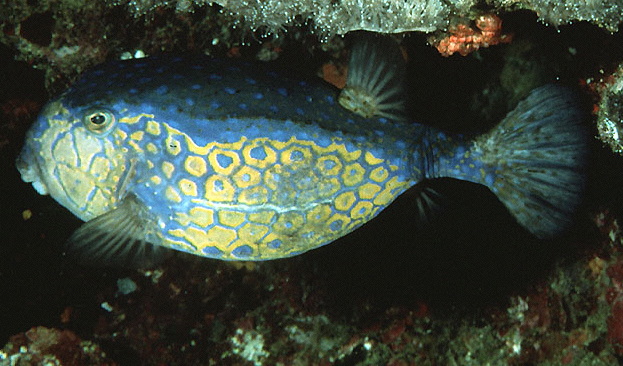
By Bob Goemans


Not Reef Tank Suitable
Likely Fish-Only Tank Suitable
These fishes belong in the Order Tetraodontiformes and Suborder Tetraodontoidei as members of the Family Ostraciidae (Trunkfishes), which contains 14 genera and about 33 species.
They are all either box or angular-shaped and all have a rigid body composed of bony plates covered with toxic mucus that can be released when stressed. The only body openings are for the eyes, mouth, gills, anus, and fins. Boxfish poisonings are rare, with the only recorded incident being with the Blue Boxfish from Hawaii. Suspect a situation such as this happen to a northern Arizona store owner who called me after finding all his fish dead one morning, including the Blue Boxfish in his system.
The cowfish is usually more angular-shaped and with various size horns, hence its name, as Boxfishes/Trunkfishes do not have horns, and their bodies are mostly trunk/box-shaped. They are all slow swimmers and are mostly found in shallow waters, sometimes in seagrass beds. Some feed by blowing away bottom sand and looking for small invertebrate.
Often, newly arrived cowfish are light sensitive and difficult to get feeding. Enriched adult brine shrimp and black worms are worthwhile trying, as the motion of the food often entices the animal to begin feeding. Since cowfish are constant grazers, hence the name, an adequate supply of algae should be supplied. Small hermit crabs and snails can also be a living food supply in the system. Hand feeding cowfish once they are acclimated is a favorite pastime with many aquarists.